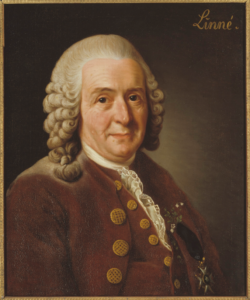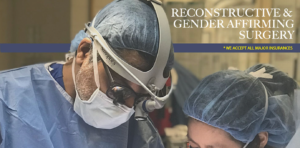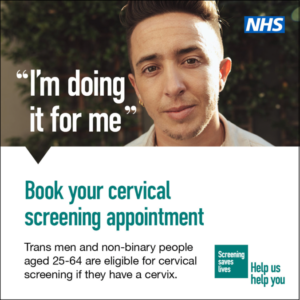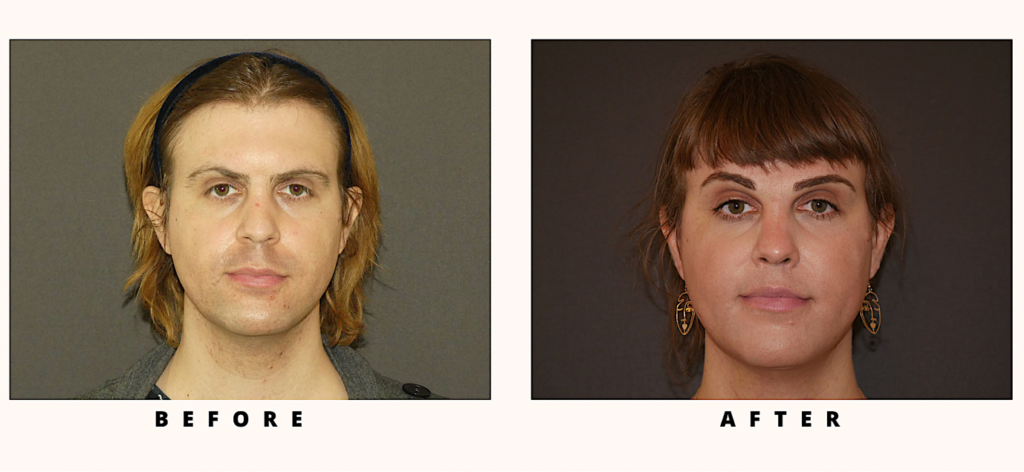The English slang expression “Bob’s your uncle” is a simple confirmation that something has been achieved or that an explanation has reached its end. It’s very much like the French expression, “et voilà!”, and is used in similar circumstances. It seems to be a saying that is almost exclusively British and virtually unknown in other English-speaking countries. The expression is said to date back to a political scandal in Britain in 1886, when the Prime Minister, Robert Cecil, gave his totally unqualified nephew, Arthur Balfour, an important ministerial job. “Bob” is short for Robert, so “Bob’s your uncle” was a jokey explanation for Balfour’s otherwise inexplicable promotion. There may be more to it than that because the expression doesn’t appear in print until 1924, when a music hall review was produced in Dundee, Scotland, with the title song performed by the popular artiste, Florrie Forde. The song was called “Follow Your Uncle Bob”, and Balfour clearly did. It may have begun on a different date but things like that have a habit of getting confused. Certainly, saying “Bob’s your aunty” would have been most inappropriate. Nobody (as far as I know) ever suggested that Balfour was anything other than a rather fortunate nephew whose rise to prominence owed more to his family connections than to his abilities and political skills. We must recall that the word “nepotism” is derived from “nephew”.
that an explanation has reached its end. It’s very much like the French expression, “et voilà!”, and is used in similar circumstances. It seems to be a saying that is almost exclusively British and virtually unknown in other English-speaking countries. The expression is said to date back to a political scandal in Britain in 1886, when the Prime Minister, Robert Cecil, gave his totally unqualified nephew, Arthur Balfour, an important ministerial job. “Bob” is short for Robert, so “Bob’s your uncle” was a jokey explanation for Balfour’s otherwise inexplicable promotion. There may be more to it than that because the expression doesn’t appear in print until 1924, when a music hall review was produced in Dundee, Scotland, with the title song performed by the popular artiste, Florrie Forde. The song was called “Follow Your Uncle Bob”, and Balfour clearly did. It may have begun on a different date but things like that have a habit of getting confused. Certainly, saying “Bob’s your aunty” would have been most inappropriate. Nobody (as far as I know) ever suggested that Balfour was anything other than a rather fortunate nephew whose rise to prominence owed more to his family connections than to his abilities and political skills. We must recall that the word “nepotism” is derived from “nephew”.
Gender identity was clearly somewhat looser in classical times and it would seem that some people would like to restore that situation for all of us. This especially applies to what’s called “gender reassignment” in which children with gender dysphoria undergo surgery to fix their genders irreversibly for all time. Confusion over one’s sexual identity was not at all uncommon in ancient Greece (as you may recall from the many Greek myths you were told; they weren’t all about Minotaurs, after all), where various classical writers, including Plato, Herodotus and Xenophon (among a great many others) used the theme in their work. Sexual relations between adult men and young teenage or adolescent boys – normally aged between 13 and 17 – was very common. It was known as “pederasty” and was legally practised in some city states but banned in others. In any case, it seems to have been fairly common practice. In Sparta, it was compulsory for boys of 7 to take an older male lover who also acted as a mentor. The same tendencies applied to women, although according to my 1827 copy of Lemprière’s Classical Dictionary, many of the stories are exaggerated or simply untrue. The claims, for instance, that the famous Sappho surrounded herself with her young female lovers are dismissed, although Lemprière admits that her passions were violent in the extreme.

Her female companions, Telesiphe, Atthis and Megara, were, according to Lemprière, used as a pretext for what he calls “calumnies” that have tainted her reputation and to prove his point he writes: “She conceived such a passion for Phaon, a youth of Mitylene, that upon his refusal to gratify her desires, she threw herself into the sea from Mount Leucas.” If Lemprière is to be believed, she was only teaching her young women friends music, but he was almost certainly wrong. She wrote some very beautiful poetry, though, most of it devoted to her young female friends:
“Throned in splendor, immortal Aphrodite!
Child of Zeus, Enchantress, I implore thee
Slay me not in this distress and anguish,
Lady of beauty.”
Even Aristotle commended her, saying, ‘Sappho deserves respect, though she is a woman.’ Note the “though”. Well, they were distant times and equality was undreamed of. Ovid says Sappho was not handsome and was getting on in years when she fell for Phaon. It didn’t stop her from producing nine books of lyric verses as well as epigrams, elegies and other examples of great wit and intelligence. Even Lemprière was impressed, although very little of her writing survives. “Of all these compositions,” he wrote, “nothing now remains but two fragments, whose uncommon sweetness and elegance show how meritoriously the praises of the ancients have been bestowed upon a poetess who for the sublimity of her genius was called the tenth muse.” Plutarch was a fan, too. It seems as if many of the memories about her that have come down to us were scurrilous nonsense written by ancient Greece’s tabloid journalists. Unless, of course, Lemprière got embarrassed writing about such private and personal matters and preferred to use euphemisms, thus confining them to the privacy of the bedroom. After all, the early 19th century was not known as a time of sexual licence.
| NO TURNING BACK
There has been a trend towards helping (if that’s the right word) youngsters

experiencing gender dysphoria – unhappiness with one’s physical sexual identity – by undertaking surgery, including the use of what has been described as “genital mutilation”. In this case, a boy, say, who feels he is really a girl, can undergo an operation that makes his body at least appear to be female. An equivalent operation to turn a female into a male is harder to imagine, since it would involve adding something external to the body in question. According to Professor Christopher Gillberg and others at the University of Gothenburg, as quoted in Svenska Dagbladet, some of these operations have been performed “without a reasonable basis in terms of science, proven experience and often without ethical review”, which sounds very worrying. The whole issue is raised in the Canadian Gender Report, which refers to the Swedish U-Turn regarding gender transitioning in children. The report quotes the article in Svenska Dagbladet, in which it’s reported that every year in Sweden hundreds of children with gender dysphoria are treated with hormones at first and later with surgery, despite a relative lack of evidence of any benefit. Clearly the sufferers require help, but in what form? The current record on treatment has been described as “a big experiment”.
There is a big and worrying question about young teenagers who identify as transgender: however mature they think they are, do young teenagers know themselves and the world well enough to make the decision to undergo an irreversible treatment which they may regret?

In the UK, Britain’s National Health Service (NHS) has announced that it is closing down and completely re-thinking its gender identity clinic for young people because it fears that it has effectively been “rushing” children into treatment that will permanently alter their lives. Instead, the clinic is to be “de-centralised” from London, setting up clinics on a regional basis in existing children’s hospitals. In the US, the majority of young patients are adolescent girls, which may come as a surprise. This could mean a halt to the existing clinical approach that predominates on both sides of the Atlantic, in which a clinician accepts a patient’s choice of genders and begins drug treatment to halt puberty, and then, later on begins the use of cross-sex hormones, such as androgens, which include testosterone, which gives men facial hair, a deeper voice, an Adam’s apple and a more muscular build. Estrogens, such as Estradiol, on the other hand, cause such features as women’s breasts, broader hips and even menstrual cycles. In fact, both genders produce both androgens and estrogens, but clearly in different proportions, depending on predominant gender, with males receiving more androgens and females more estrogens.
The decision to undergo treatment for gender dysphoria is a big one without any doubt. It means a lifetime of taking puberty-blocking drugs, cross-sex hormones and – ultimately, in many cases – surgery. The hormones – basically androgens or oestrogens – can give the patient some of the physical attributes they would like to have, along with their desired secondary sex characteristics.

The decision to close the Gender and Identity Development Service at Britain’s best-known clinic for “transitions”, the Tavistock and Portman (widely known as the Tavistock Clinic), will have widespread effects on the whole issue of changing gender and the treatment in the UK of gender dysphoria. It has been pointed out that the work of the clinic should have come under scrutiny much earlier, because it was using puberty-blocking drugs that are now known to cause brain swelling in some patients, possible leading to vision loss. Staff there had raised concerns in the past, but that hadn’t prevented its throughput of patients rising by 4,000% over the last decade among girls alone. Changing one’s gender seems to have become fashionable or at least fairly common.
In any case, scientists have discovered that nothing is quite as clear-cut as most of us imagine. An article in Scientific American in September 2017 did an excellent job of summing up the state of our knowledge and also identifying where it’s lacking: “To varying extents, many of us are biological hybrids on a male-female continuum,” said an excellent editorial. “Researchers have found XY cells in a 94-year-old woman, and surgeons discovered a womb in a 70-year-old man, a father of four. New evidence suggests that the brain consists of a ‘mosaic’ of cell types, some more yin, others further along the yang scale.” The editorial continues: “These findings have far-reaching implications beyond just updating the biology textbooks. They have particular bearing on issues of personal identity, health and the economic well-being of women. That is because arguments about innate biological differences between the sexes have persisted long past the time they should have been put to rest.” I can’t imagine that many of us – at least in the West – would argue with that.

Basically, the biology looks simple: X + X = ♀ and X + Y = ♂. For those suffering from gender dysphoria, however, the gender symbols first created by Carl Linaeus in 1751, originally intended with reference to flowers and for being applied to plants perhaps somewhat over-simplify the entire issue. Life must be difficult in a great many ways for those who are unsure about their gender or who feel they were born into the wrong body and the temptation to resort to surgery must be strong, as long as the sufferer acknowledges that it’s a one-way trip. The symbol most often used to represent someone who sees themselves as nonbinary or hermaphrodite (the word comes from the names of Hermes, the Greek version of Mercury and Aphrodite, the Greek name for Venus) is ⚥. These characters from Greek classical literature and mythology get everywhere. It’s not a sign we ever see outside a public toilet and for fairly obvious reasons.
| WARNINGS A-PLENTY
Thousands of British children have received gender “correction” treatment at the Tavistock Clinic’s Gender and Identity Development Service, despite repeated warnings by experts about shoddy care there and poor decisions. Psychologists complained that vulnerable children were being rushed through a process they were too young to understand without being fully aware of its irreversibility in most cases.
The British government’s National Institute for Care and Excellence (NICE) was set up in 1999 as an independent organisation intended to tackle the variation in availability and quality of healthcare across the whole NHS. Looking into what was happening at the Tavistock, it concluded that the link between actual transition and any improvement in psychological function was extremely weak. The old excuse – that a failure to carry out the gender surgery the child in question wants could lead them towards suicide – has very little evidence to support it. What’s more, the Food and Drug Administration is placing an additional warning on puberty-blocking drugs, which replaces their previously held belief – dogma, almost – that puberty-blockers and cross-sex hormones were perfectly safe and reversible. The final straw came in a report by the highly-regarded paediatrician Dr. Hilary Cass, a former president of the Royal College of Paediatrics and Child Health, who carried out an independent study of how Britain cares for transgender children. She stated her belief that they were receiving inadequate care, writing in her report she points out how demand for the Gender and Identity Development Service (GIDS) at the Tavistock has soared.

In the introduction to her interim report, Dr. Cass writes: “I recognise there is a pressing need to enhance the services currently available for children, young people, their independent review of gender identity services for children and young people, parents and carers, some of whom are experiencing considerable distress.” Dr. Cass goes on: “I know the time I am taking to complete this Review and make recommendations will be difficult for some, but it is necessary.” Dr. Cass believes we have been getting things wrong for a very long time, although given the controversial nature of the subject that may not be surprising. The Report points out that there has been a significant increase in the numbers of referrals to the Gender Identity Development Service (GIDS) which has contributed to an overlong waiting list for treatment.
At primary, secondary and specialist level, her Report points out, there has been a lack of agreement, “and in many instances a lack of open discussion about the extent to which gender incongruence in childhood and adolescence can be an inherent and immutable phenomenon for which transition is the best option for the individual, or a more fluid and temporal response to a range of developmental, social and psychological factors.” She goes on to add: “Professionals’ experience and position on this spectrum may determine their clinical approach.” She describes the current unenviable position for some young people as “a clinician lottery”.
| DIFFERENT COUNTRY, DIFFERENT TREATMENT
Britain’s decision to close down its GIDS unit has been described in an article for the Arizona Republic as “a veritable bomb” going off in the world of transgender medicine. The article explains that the closure came because the clinic had been “rushing children into life-altering treatment” without sufficient safeguards. This latest decision, says the article by Phil Boas, is inevitably going to create shock waves in the United States, “where significant numbers of this generation’s young people have been transitioning to other genders, entering a pathway of lifelong treatment on puberty blockers, cross-sex hormones and surgery.” In the United States, some 300,000 American teenagers between the ages of 13 and 17 identify themselves as transgender. The whole matter is, of course, controversial, especially for religious groups, an issue that is always held to be of more significance in the United States than in Europe. One of the main advocates in the US of what’s called “gender-affirming care” denies that the treatment applied in the US differs in any significant way from what happens in European clinics.

In the United States, doctors, clinics and hospitals will not be obliged to provide gender reassessment treatment that goes against their consciences. The mandate was contained in a rule issued by the Department of Health and Human Services (HHS), which expanded the definition of non-discrimination “on the basis of sex” to include gender identity. It would be wrong, perhaps even foolish, however, to describe this, or the decision to close London’s Tavistock Clinic as a victory for one side or the other. Things simply progress and medical opinions change. Now, health authorities not only in the UK but also in Sweden and Finland have agreed that there is no evidence in most cases for the benefits of puberty-blockers and cross-sex hormone treatment. All three countries have dramatically scaled back their use in treating gender dysphoria. Health authorities seem to agree that far more research is needed. Now the World Professional Association for Transgender Health (WPATH) has agreed that “eunuch” is a valid gender identity. WPATH has now withdrawn its criticism of Britain’s NHS over the closure of the Tavistock unit. Dr. Cass effectively blamed the US for the “affirmative” model that led to treatment of children with gender dysphoria without sufficient safeguarding. HHS issued the mandate in 2016, interpreting the Affordable Care Act as requiring “physicians to perform gender-transition procedures on any patient, including children, regardless of whether the doctor believed the procedure could harm the patient.”
In the United States, physicians found themselves obliged to perform gender-transition surgery on any patient of any age, including children, even in cases in which they feared the outcome might be damaging.

The resulting court case, Sisters of Mercy versus Becerra, saw a legal confrontation involving a coalition of Catholic hospitals, a Catholic university and a group of Roman Catholic nuns who run clinics for the poor. They had legal representation from the Becket Fund for Religious Liberty. Luke Goodrich, vice president and senior counsel at Becket, welcomed the court’s decision, saying that it freed health care professionals to act in accordance with their conscience and their medical judgment. However, WPATH has openly condemned the NHS in a way that reveals its strong preference for the “affirmative” model, arguing that the NHS is emphasizing “careful exploration of a child or young person’s co-existing mental health, neuro-developmental and/or family or social complexities, which WPATH considered to be an “alarming” practice of “outdated gatekeeping”.
The American approach seems to be very much at variance with what happens in the Netherlands, and which seems to be spreading across Europe. There is an assumption of gender-identity discordance in both cases, but there are differences, including how gender identity can be known and what should be done about it. The main differences of approach are three-fold. Firstly, there is the childhood social transition: new names, new pronouns and the use of public toilets. In the American version, the gender identity is known from an early age and must be swiftly taken up by parents, clinicians, teachers and so on. In the Dutch model, which follows decades of research, there is a conviction that gender dysphoria will subside by adolescence or early adulthood, sometimes resolving into homosexuality, with a recommendation for “watchful waiting” intended as a preview to positive action only once the true situation and its likely outcome become clear. Differences over treatment and approach are clear, but experts on either side differ over aetiology, or basic background cause, too.
| PUTTING THINGS RIGHT?
Recent research suggests that if a child’s own feelings that their gender has been wrongly assigned are encouraged or even just acknowledged by their parents and peers, then their dysphoria is more likely to persist to the point at which he or she seeks puberty suppression. The “watchful waiting” should persist into the early stages of puberty and the process should only be abandoned if the sufferer finds living in their physical gender too painful mentally. The Dutch team do not recommend that a teenager should try living in his or her true physical sense.

Britain’s NHS recommends social transition only for adolescents who have been diagnosed as suffering from dysphoria. There are clinical differences of views, too. Those who follow the “affirmative” version (popular in the United States) believe the issue has a strong neurological component, although there is no clinical evidence to support this. “Studies on brain structure and functioning,” wrote Leor Sapir in ‘Health Care, Politics and Law, The Social Order’, “are notoriously inconclusive, mainly because they cannot control for homosexuality or for the effects of synthetic hormone use and gender-rôle change on the brain.” As the Dutch researchers themselves have put it: “the (patho-) biological basis of [gender dysphoria] is still poorly understood, and its diagnosis relies totally on psychological methods.”

Nothing has turned up to challenge this view and there are fears that young teens are identifying as cross-gender because of social influences, rather than anything medical or psychological. Such a viewpoint is strictly frowned upon in the United States, however, where the very idea that there could be an underlying social cause meets stony resistance. Interestingly, the Cass report found that most candidates for paediatric gender treatment have been teenage girls with no previous history of dysphoria but with a prepubertal history of anxiety, depression, ADHD and autism. Confirming Cass’s findings, Finland’s Council for Choices in Healthcare reported that “psychiatric disorders and developmental difficulties may predispose a young person to the onset of gender dysphoria.”
Research undertaken in the United States suggests that, although the levels of psychopathology and psychiatric disorders in trans people at the time of their assessment are higher than in the rest of the population, they do improve following gender-confirming medical intervention, in many cases reaching normative values. The main Axes in psychiatric disorders were found to be depression and anxiety disorder, which will hardly come as a surprise.
| LOVE, DESIRE AND CONFUSION
Love seems to have played a very big part in the social life of classical Greece, but so it does today in many societies, and back then it was also the inspiration for a great deal of classical Greek literature, although strictly speaking homosexual love largely met with disapproval, or at least it was something people preferred not to talk about. A contemporaneous epithet suggests the kinds of problems Lesbian women faced in its description of a relationship between two women: “They are unwilling to play Aphrodite’s games according to her rules, but they escape to other things that are not appropriate.” It reads like a slap on the wrist, albeit a fairly mild one, like a maiden aunt who has just caught her favourite nephew in an act of onanism. So, Lesbianism met with some disapproval, but the biographer Plutarchus suggests that in Sparta “fair women” could also fall in love with girls. Of course, the outstanding lyricist of “forbidden love” was Sappho, who came from Lesbos (where else?) and who is regarded worldwide as the first (as far as we know) Lesbian love poet.

Some experts doubt if her “husband” actually existed, since his name actually means “penis”. Her daughter, Kleis, seems to have been real enough and to have inspired poetry on Sappho’s part. She must have come from somewhere, presumably a sexual encounter. Here is an extract: “I have a beautiful daughter; Like a golden flower; My beloved Kleis. I would not trade her for all Lydia.” It somehow sounds very modern. Sappho’s companions even get a mention in the Iliad: “I will give him seven excellent workwomen, Lesbians, whom I chose for myself when he took Lesbos – all of surpassing beauty.”
The most common form of same-sex relationships between elite males in Greece was pederasty, which means “boy love”. It was a quite common and apparently acceptable for an older male to form a sexual relationship with an adolescent youth. A boy was considered a “boy” until he was able to grow a full beard. In Athens the older man was called erastes, whose task it was to educate, protect, love, and provide a rôle model for his eromenos whose reward for him lay in his beauty, youth, and promise. Such a notion has the support of archaeological evidence discovered by experts, such as a bronze plaque of an older man carrying a bow and arrow while grabbing a younger man by the arms. The youth in question is carrying a goat whose significance is a mystery to me. Furthermore, the boy’s genitals are exposed in the plaque, which experts interpret as being further evidence of pederasty. Britain’s NHS defines gender dysphoria as: “a sense of unease that a person may have because of a mismatch between their biological sex and their gender identity.” It goes on to warn that: “This sense of unease or dissatisfaction may be so intense it can lead to depression and anxiety and have a harmful impact on daily life.”

The NHS takes a gentle, sympathetic view of those with gender issues: “Many people with gender dysphoria have a strong, lasting desire to live a life that “matches” or expresses their gender identity,” says the NHS on its website. “They do this by changing the way they look and behave. Some people with gender dysphoria, but not all, may want to use hormones and sometimes surgery to express their gender identity.” The NHS makes it clear that it’s not a form of mental illness of any kind. “Gender dysphoria is not a mental illness, but some people may develop mental health problems because of gender dysphoria.” More and more is being uncovered about the condition, just as more and more examples of Sappho’s poetry are being found and translated. Sappho never truly found a solution to salve the pain she felt on departing from one of her many female lovers. It is not a condition for which there is a “cure” and irreversible “cures” involving surgery may come to be regretted. But sex, of course, is important, whatever form it must take. As the writer Henry Miller once put it: “Sex is one of the nine reasons for reincarnation. The other eight are unimportant.” Or as Sappho herself put it in one of her many poetical works: “Sweet mother, I cannot weave –slender Aphrodite has overcome me with longing for a girl.” I must confess to feeling sorry for her obvious confusion, although her poetical works are still famous after more than 2,600 years, which is a remarkable record. Discussions concerning sex change surgery will doubtless continue with no clear end in sight. We have evolved somewhat oddly as human beings and nobody has yet found a universal catch-all cure for some of the odder side effects. Perhaps they never will.

